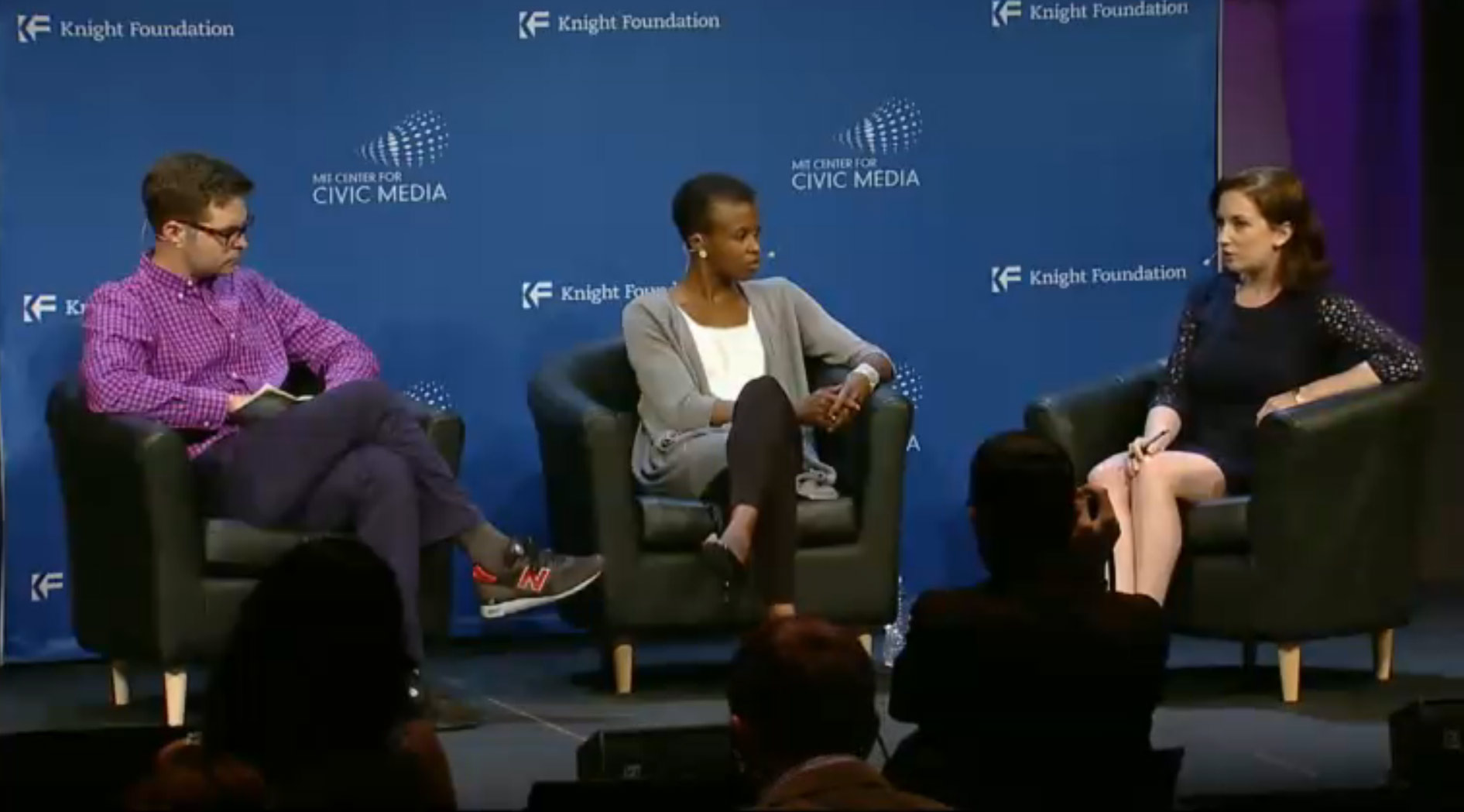
Civic Media Conference discusses ‘putting users first’
John Bracken, Emi Kolawole and Kristen Titus at the Knight-MIT Civic Media Conference.
In a time when technology allows for a continuous stream of creating “the next big thing,” project leaders may lose track of what potential users really need.
The solution? Remembering to keep an open mind by continually asking “why?” That was the message from panelists during a discussion on “Putting Users First” at the 2014 MIT-Knight Civic Media Conference in Cambridge, Mass., last week.
Putting Users First on Livestream.com
Ethan Zuckerman, director of the MIT Center for Civic Media, set the tone for the discussion in his introductory remarks. Zuckerman told participants that several questions should have surfaced when hearing presentations at the conference about projects people are developing.
“Who are the users of all of these things? How do we think about the users of different aspects of civic technology?” Zuckerman asked. “And how do we design for and design around and preferably design with those users?”
The panel included John Bracken, director of journalism and media innovation at Knight Foundation; Emi Kolawole, editor-in residence at the Stanford University d.school; and Kristen Titus, former executive director of Girls Who Code. Kolawole and Titus also served as project reviewers for the recent Knight News Challenge on strengthening the Internet.
Titus said the News Challenge winners “all exhibit one similar thing, and that is they put their users first.” Asking “why” when beginning a project is key to doing that, Kolawole said.
“Ask ‘why’ often,” Kolawole said. “If you ask ‘why’ five times, often you get to something very, very deep and very, very emotional and very, very powerful, and hopefully, you get to an end result that is that much deeper, that much cheaper, and usually that much more effective.”
For Kolawole, users are foremost individuals with unique preferences and needs. To serve them, you need to establish a relationship, she said.
“People use things that fulfill a need in their lives and that fit into their lives,” Kolawole said. “So, it’s not rocket science. You have to intimately understand people’s lives, behaviors and beliefs, if you want to create something that they will actually use.”
Bracken said he hopes social good organizations will transition to focus more on specific user needs and less on ambitious, preconceived ideas.
“I think that adaptation or that observation is a tough one for a lot of us in the social sector to make, right?” Bracken asked. “We’re doing our work because we’re passionate about giving back to our communities, and that’s precious to us and we want to do that. And we don’t necessarily want to be challenged by the reality of where people are.”
Bracken said organizations should combat this challenge by being more open.
“We focus on that little precious idea that we huddle or protect,” Bracken said, “and we try to carry that candle down the road, other than taking a more open approach and seeing that that makes sense.”
Recent Content
-
Journalismarticle ·
-
Journalismarticle ·
-
Journalismarticle ·


